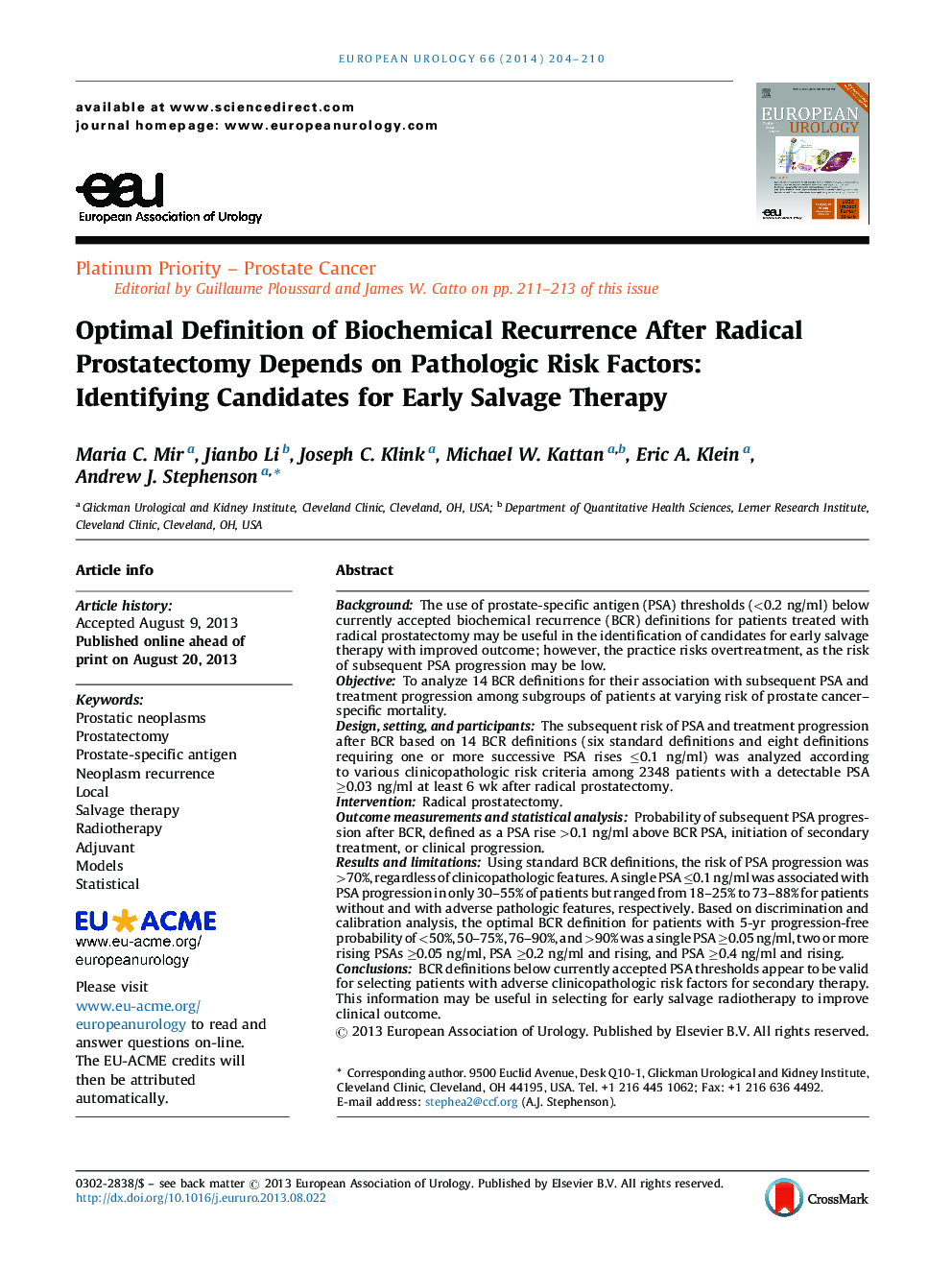| کد مقاله | کد نشریه | سال انتشار | مقاله انگلیسی | نسخه تمام متن |
|---|---|---|---|---|
| 3923746 | 1253075 | 2014 | 7 صفحه PDF | دانلود رایگان |
BackgroundThe use of prostate-specific antigen (PSA) thresholds (<0.2 ng/ml) below currently accepted biochemical recurrence (BCR) definitions for patients treated with radical prostatectomy may be useful in the identification of candidates for early salvage therapy with improved outcome; however, the practice risks overtreatment, as the risk of subsequent PSA progression may be low.ObjectiveTo analyze 14 BCR definitions for their association with subsequent PSA and treatment progression among subgroups of patients at varying risk of prostate cancer–specific mortality.Design, setting, and participantsThe subsequent risk of PSA and treatment progression after BCR based on 14 BCR definitions (six standard definitions and eight definitions requiring one or more successive PSA rises ≤0.1 ng/ml) was analyzed according to various clinicopathologic risk criteria among 2348 patients with a detectable PSA ≥0.03 ng/ml at least 6 wk after radical prostatectomy.InterventionRadical prostatectomy.Outcome measurements and statistical analysisProbability of subsequent PSA progression after BCR, defined as a PSA rise >0.1 ng/ml above BCR PSA, initiation of secondary treatment, or clinical progression.Results and limitationsUsing standard BCR definitions, the risk of PSA progression was >70%, regardless of clinicopathologic features. A single PSA ≤0.1 ng/ml was associated with PSA progression in only 30–55% of patients but ranged from 18–25% to 73–88% for patients without and with adverse pathologic features, respectively. Based on discrimination and calibration analysis, the optimal BCR definition for patients with 5-yr progression-free probability of <50%, 50–75%, 76–90%, and >90% was a single PSA ≥0.05 ng/ml, two or more rising PSAs ≥0.05 ng/ml, PSA ≥0.2 ng/ml and rising, and PSA ≥0.4 ng/ml and rising.ConclusionsBCR definitions below currently accepted PSA thresholds appear to be valid for selecting patients with adverse clinicopathologic risk factors for secondary therapy. This information may be useful in selecting for early salvage radiotherapy to improve clinical outcome.
Journal: European Urology - Volume 66, Issue 2, August 2014, Pages 204–210
